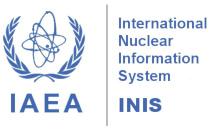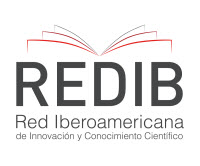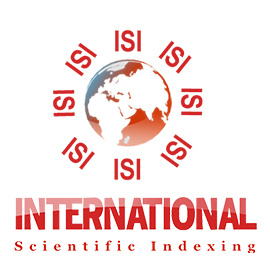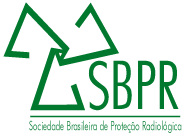Sensitivity of the IRD whole-body counter for in vivo measurements in the case of accidental intakes
DOI:
https://doi.org/10.15392/bjrs.v5i3.291Palavras-chave:
internal dosimetry, in vivo measurement, whole-body counterResumo
Intakes of radionuclides by humans may occur in the fuel cycle, nuclear medicine, biological research and in TENORM industries and in case of accidents involving workers and the general public. In vivo monitoring is recognized as a useful tool for the evaluation of such exposures. The IRD whole-body counter consists of a shielded room equipped with four HPGe and two NaI(Tl) detectors. The system is able to identify and quantify photon emitters in the range from 10 to 3000 keV. The minimum detectable activities for most of the radionuclides of interest allow occupational monitoring as well as evaluation of accidental intakes.
Downloads
Referências
CNEN - Comissão Nacional de Energia Nuclear. Diretrizes Básicas de Proteção Radiológica. Norma CNEN-NN-3.01, 2005
ICRP - International Commission on Radiological Protection. Individual Monitoring for Internal Exposure of Workers. Publication 78, 1998
IAEA - International Atomic Energy Agency. Assessment of Occupational Exposure Due to Intakes of Radionuclides” Safety Standards Series RS-G-1.2, 1999
OLIVEIRA, C.A.N.; LOURENÇO, M.C.; DANTAS, B.M.; LUCENA, E.A. and LAURER, G.R. The IRD/CNEN whole body counter: Background and calibration results. Radiat. Prot. Dosm, v.29 (3), p. 203-208, 1989
KRUSHTEN, D.A. and ANDERSON, L. Improved ultrasonic measurement techniques applied to assay of Pu and other transuranics in lung. Health Physics, v. 59 (1), p. 117, 1990.
ISO - International Standards Organization - General requirements for the competence of testing and calibration laboratories. ISO 17025, 2005
ISO - International Standards Organization – Radiation protection – Performance criteria for radiobioassay, Part 1: General Principles. ISO 12790-1, 2001
BERTELLI, L.; MELO, D.R.; LIPSZTEIN, J. and CRUZ-SUAREZ, R. “AIDE: Internal Dosimetry Software” Radiat. Prot. Dosm. v.130 (3) p.358-367, 2008
International Atomic Energy Agency. Methods for Assessing Occupational Radiation Doses due to Intakes of Radionuclides. Safety Reports Series 37, 2004.
Downloads
Publicado
Edição
Seção
Licença
Declaro que o presente artigo é original, não tendo sido submetido à publicação em qualquer outro periódico nacional ou internacional, quer seja em parte ou em sua totalidade. Declaro, ainda, que uma vez publicado na revista Brazilian Journal of Radiation Sciences, editada pela Sociedade Brasileira de Proteção Radiológica, o mesmo jamais será submetido por mim ou por qualquer um dos demais co-autores a qualquer outro periódico. Através deste instrumento, em meu nome e em nome dos demais co-autores, porventura existentes, cedo os direitos autorais do referido artigo à Sociedade Brasileira de Proteção Radiológica, que está autorizada a publicá-lo em meio impresso, digital, ou outro existente, sem retribuição financeira para os autores.
Licença
Os artigos do BJRS são licenciados sob uma Creative Commons Atribuição 4.0 Licença Internacional, que permite o uso, compartilhamento, adaptação, distribuição e reprodução em qualquer meio ou formato, desde que você dê o devido crédito ao (s) autor (es) original (is) e à fonte, forneça um link para a licença Creative Commons, e indique se mudanças foram feitas. As imagens ou outro material de terceiros neste artigo estão incluídos na licença Creative Commons do artigo, a menos que indicado de outra forma em uma linha de crédito para o material. Se o material não estiver incluído no licença Creative Commons do artigo e seu uso pretendido não é permitido por regulamentação legal ou excede o uso permitido, você precisará obter permissão diretamente do detentor dos direitos autorais. Para visualizar uma cópia desta licença, visite http://creativecommons.org/licenses/by/4.0/






















